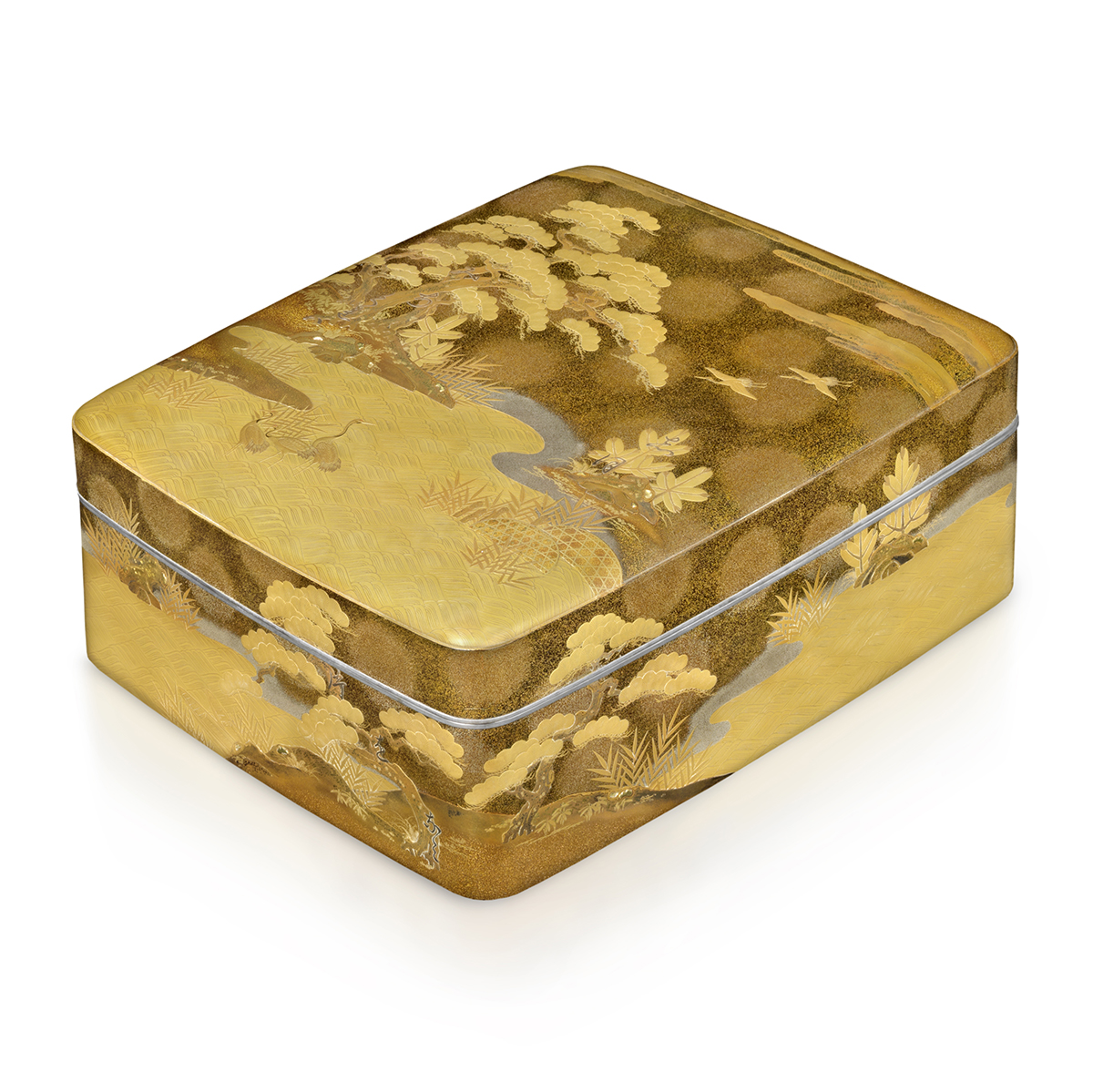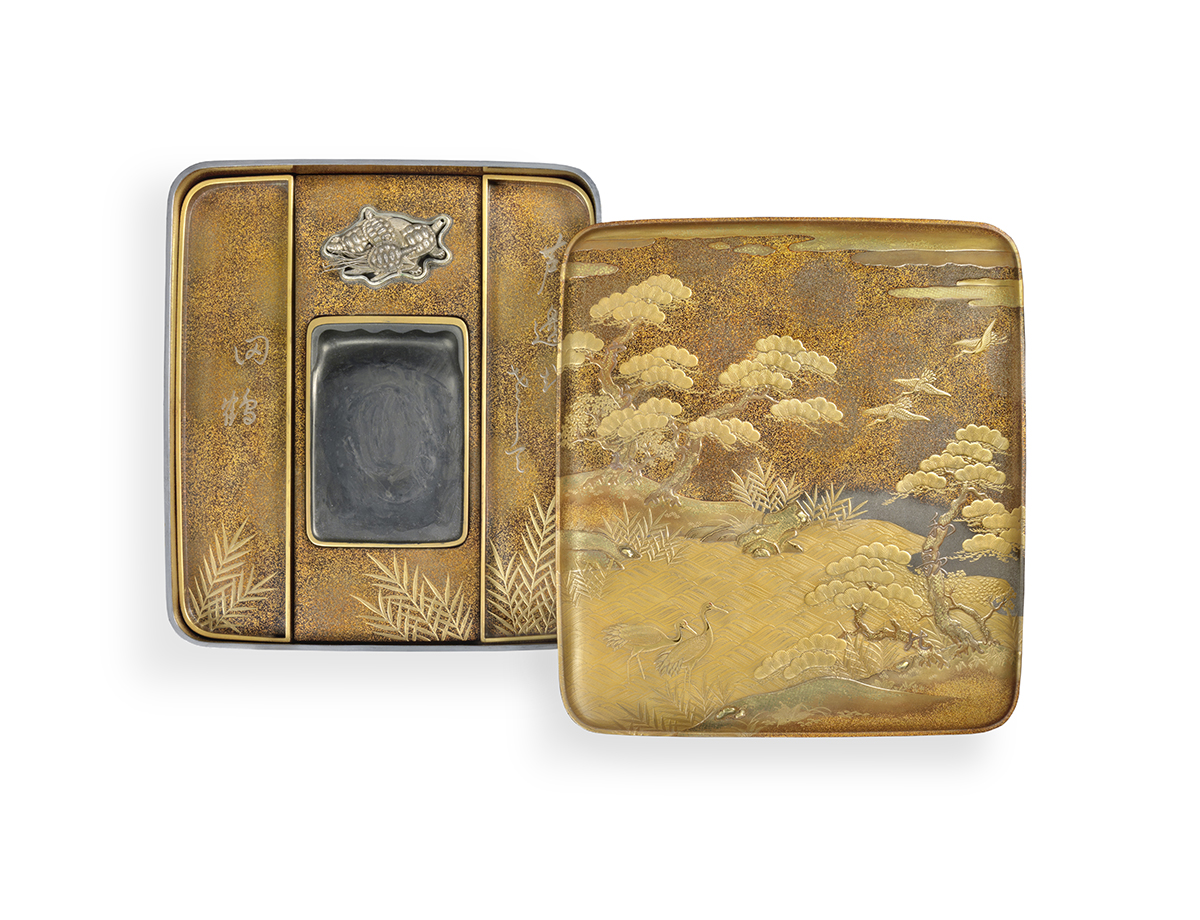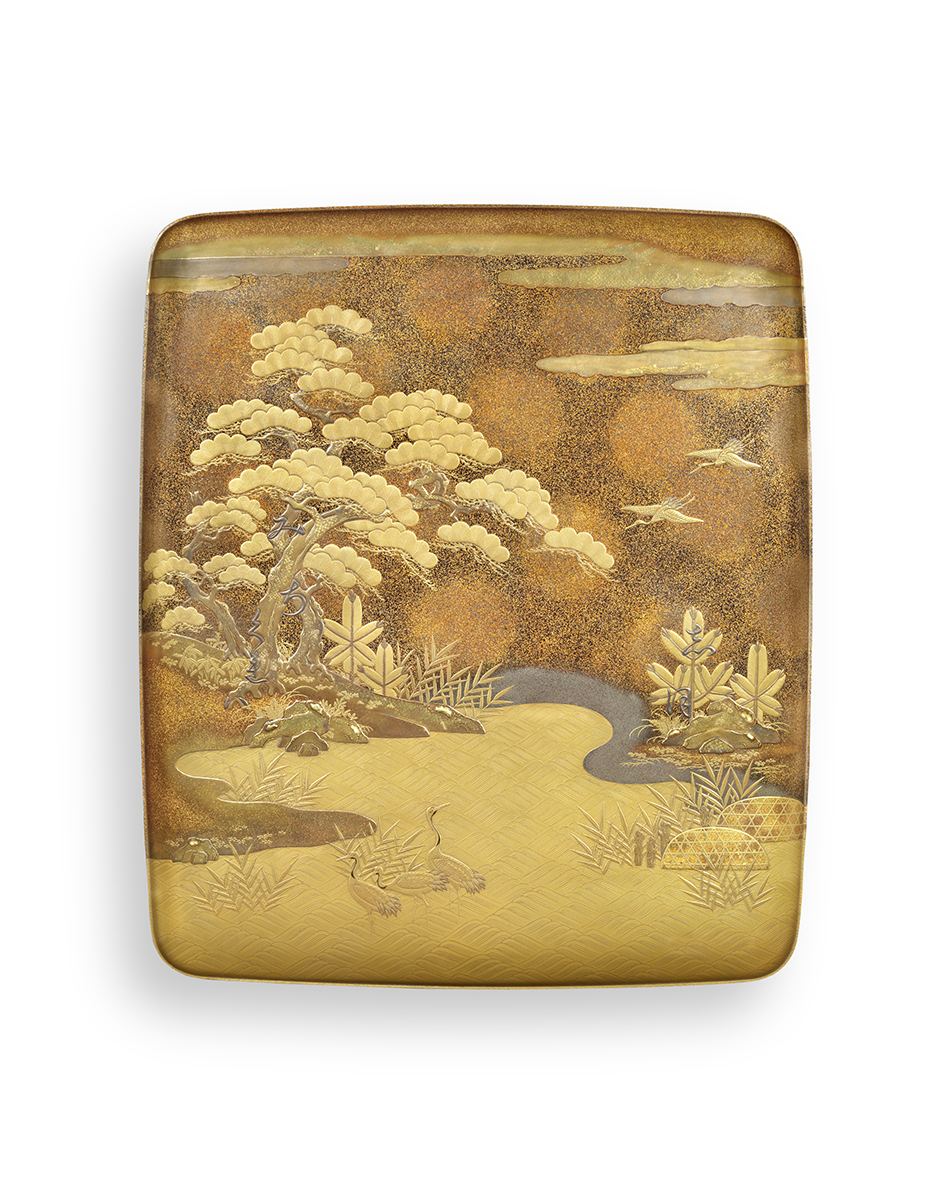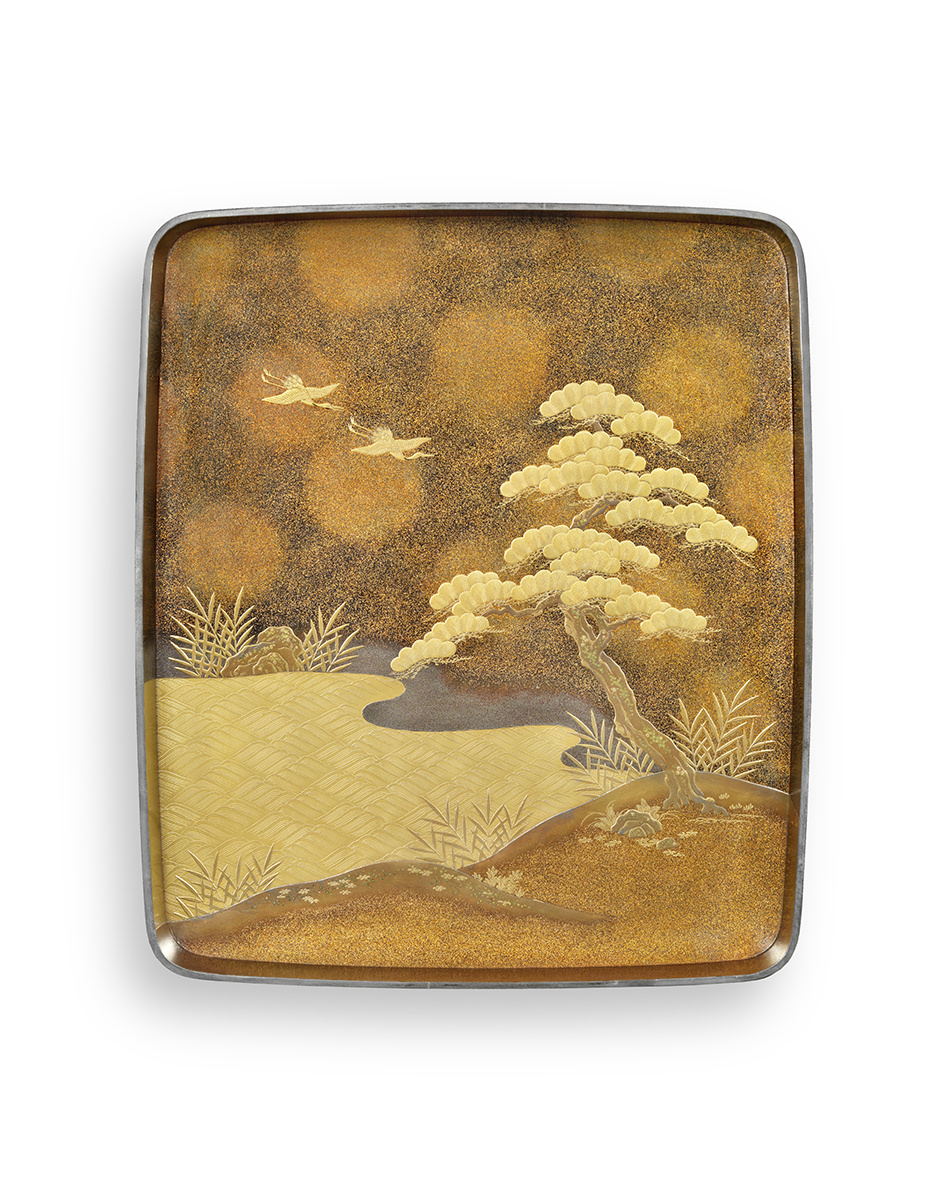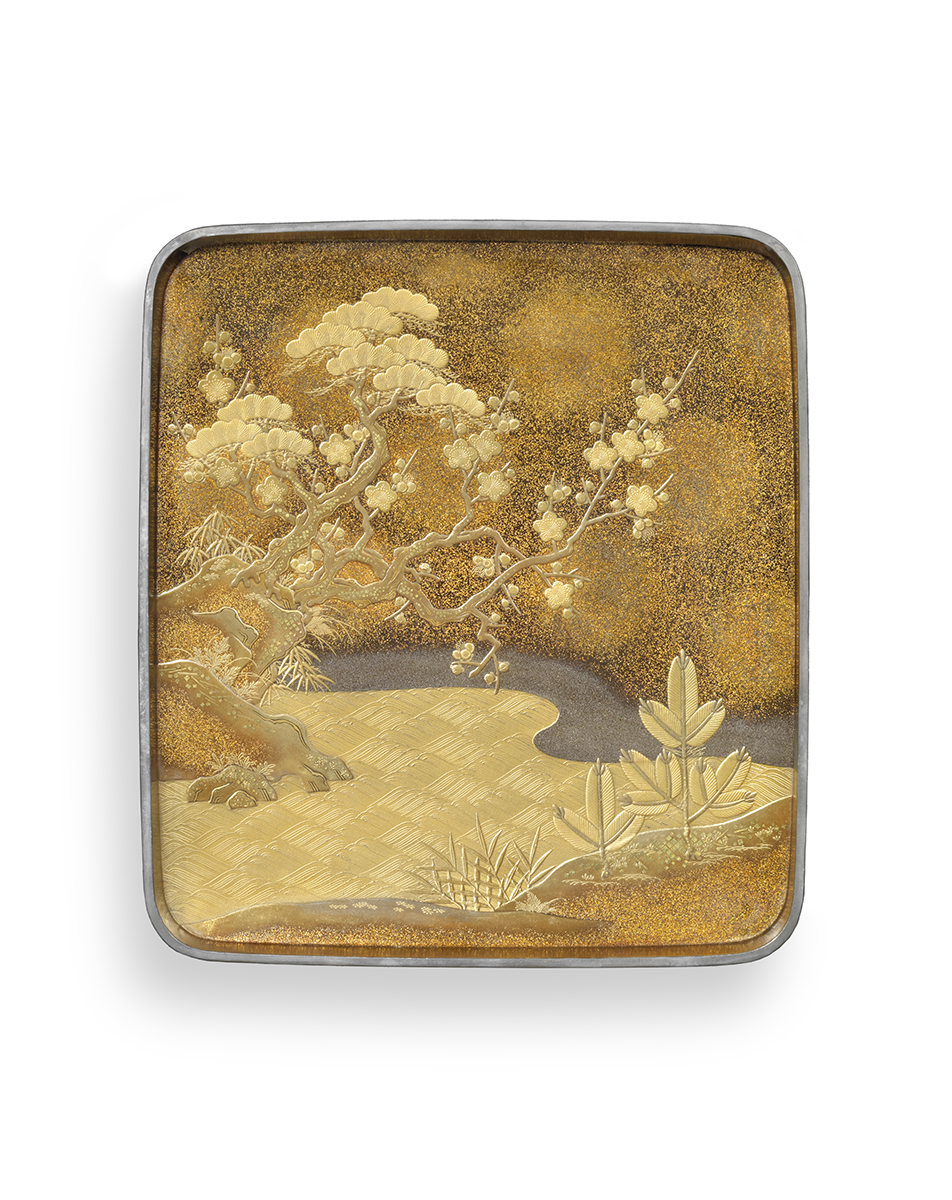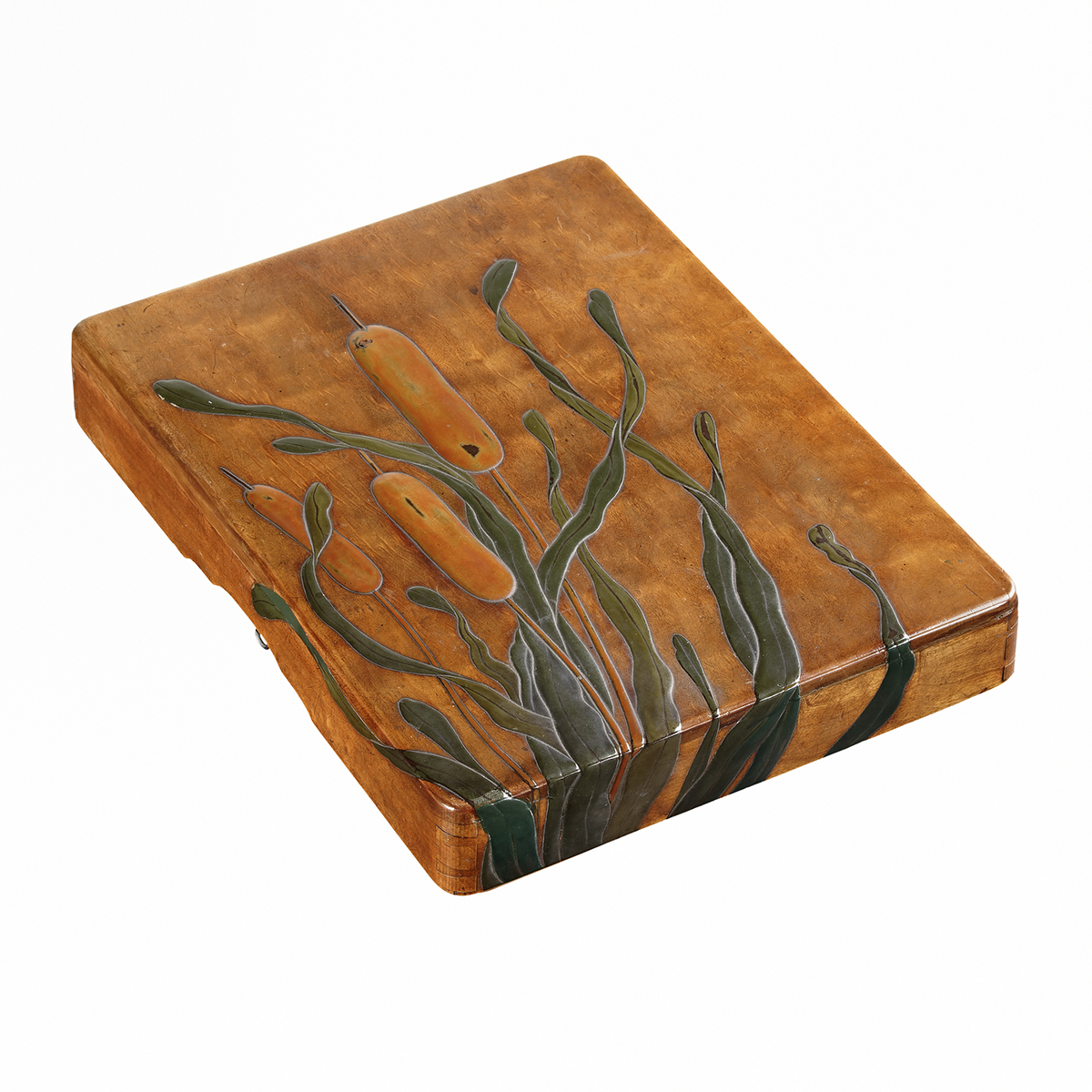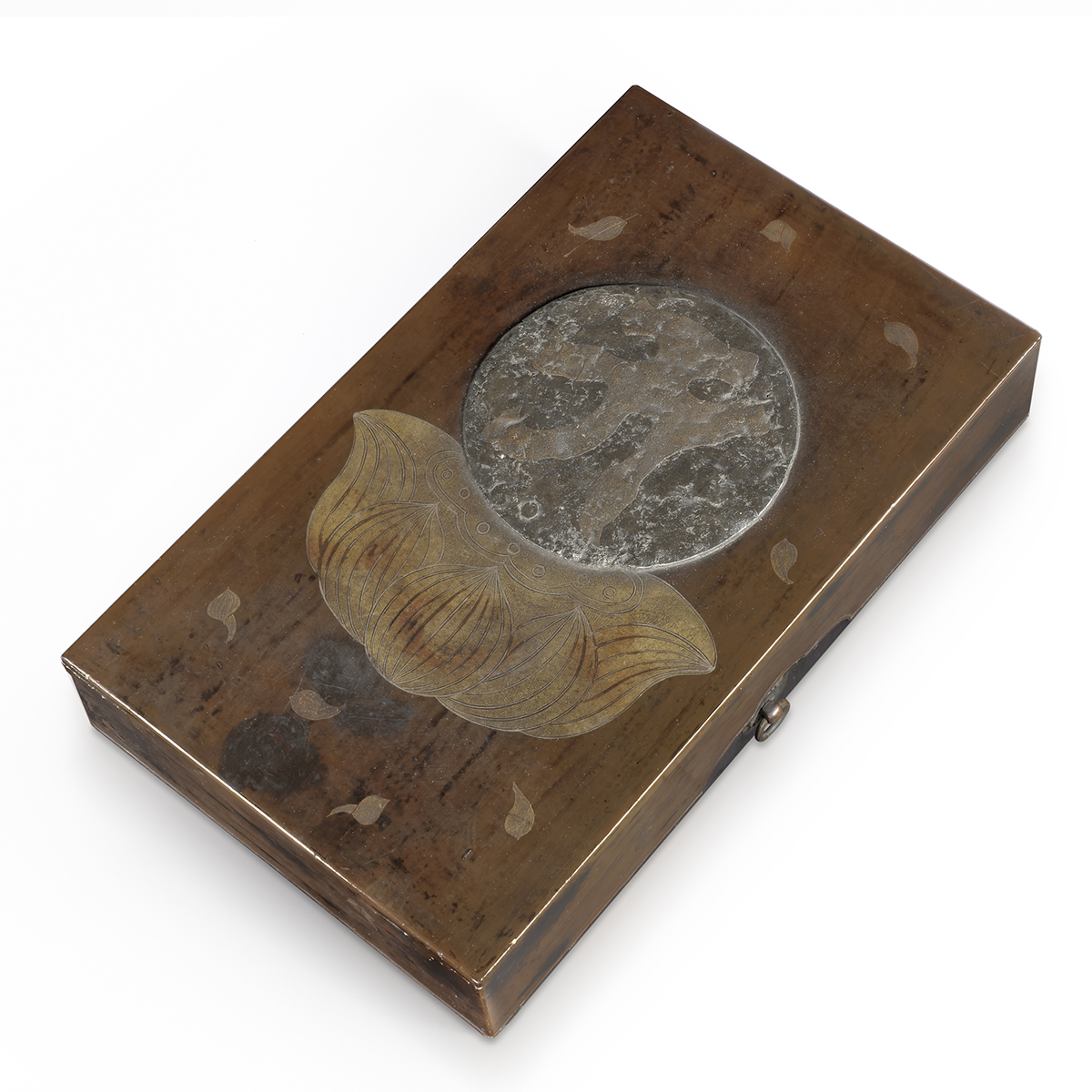Ryoshi Bako and Suzuribako
Lacquer
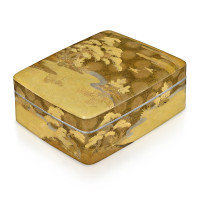
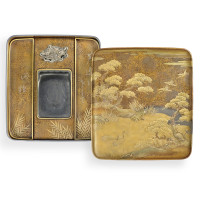
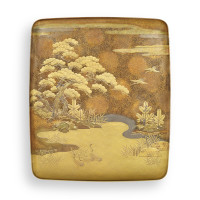
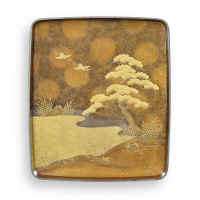
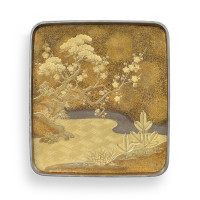
- Contact Us
-
Material
Lacquered wood with makie, nashiji
-
Size
W.42cm, D.36cm, H.15.8cm / W.26cm, D.23.5cm, H.4.7cm
-
Period
Middle Edo period, 18th century
-
Box
Awase-bako for ryōshi-bako : “Nashiji Waka-no-ura makie o-ryōshi-bako” Awase-bako for suzuri-bako : “Nashiji Waka-no-ura makie o-suzuri-bako
Description
Set of Ryoshi Bako and Suzuribako
Set of stationary box and ink stone case with motif of “Waka-no-ura”
A stationary box and ink stone case which depict the cranes at a shore where the reeds grow thick. It is merely a nice landscape in appearance, but the hidden lacquer letters indicate that it is taken a motif from a famous waka, a traditional Japanese poem “Waka-no-ura”.
"The tide is full now at Waka-no-ura bay and the tideland disappeared. The cranes which were pecking fly away toward the bank of reeds on singing. "
This poem was written by Yamabe no Akahito in 724, when the Emperor Shōmu visited Waka-no-ura in Wakayama prefecture today. It appears in Man’yōshū, the oldest anthology of waka poems of the Nara period in Japan. The place Waka-no-ura became a representative place for a motif to make waka poem in the Heian Period because of this poem and it stirred up the poets in the capital.
The technique that suggests a waka poem by putting the letters is called “ashide” or “ashide-e”. “Ashi” of ashide means the reed and “de (=te)” means the technique. Ashide technique originated in the paintings painted on the papers which depicted the reeds and a shore in the Heian period. There is no example of ashide on lacquer wares in the Heian period, but is often seen in the lacquer wares of Kamakura and Muromachi period.
This set in amazing perfect condition is a masterpiece made with several lacquer techniques. Taka-makie which gives a cubic effect. Kirikane expressing moss and the like by placing the golden metal leaves. Kimetsuke which depicts the holes on the ground or the rocks by putting the golden metal fragments.
However, the most important technique which completes this piece for a great gorgeous masterpiece is nashiji. It covers all over the piece, even the backside of cover and inside, and the polka-dotted pattern by putting the golden powders with different density has an illusory impression. The water drop is a shape of minogame (tortoise with algaes) which is auspicious for longevity. The hidden letters are separated partially, and the letters on the stationary box and on the ink stone box are different. When they are together, the letters complete the poem. Perfectly calculated pieces to the details they are.
